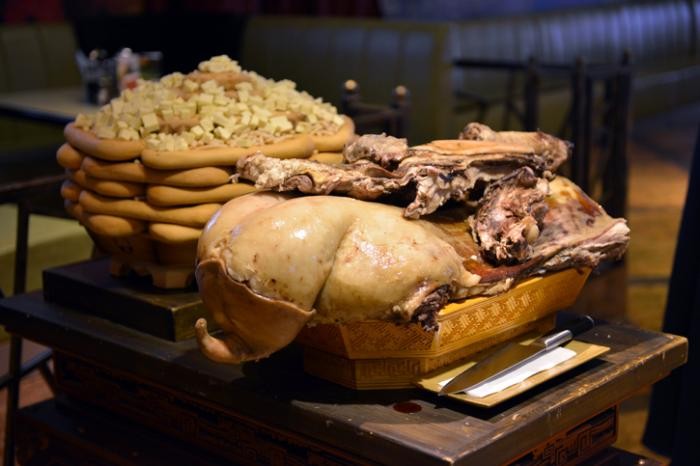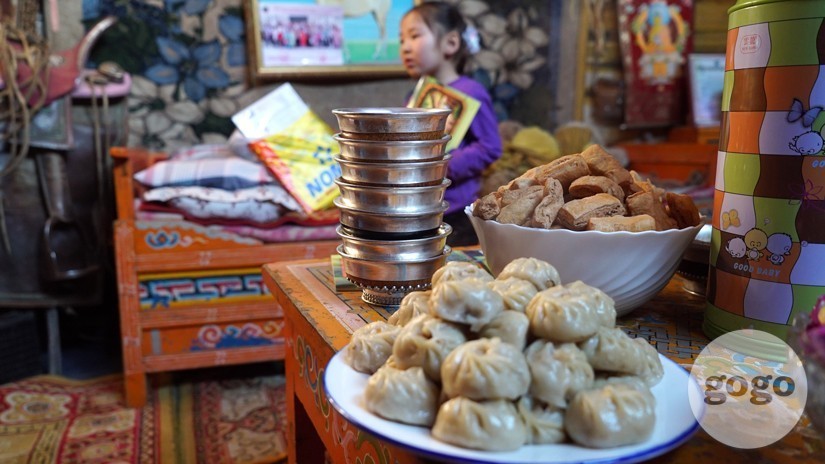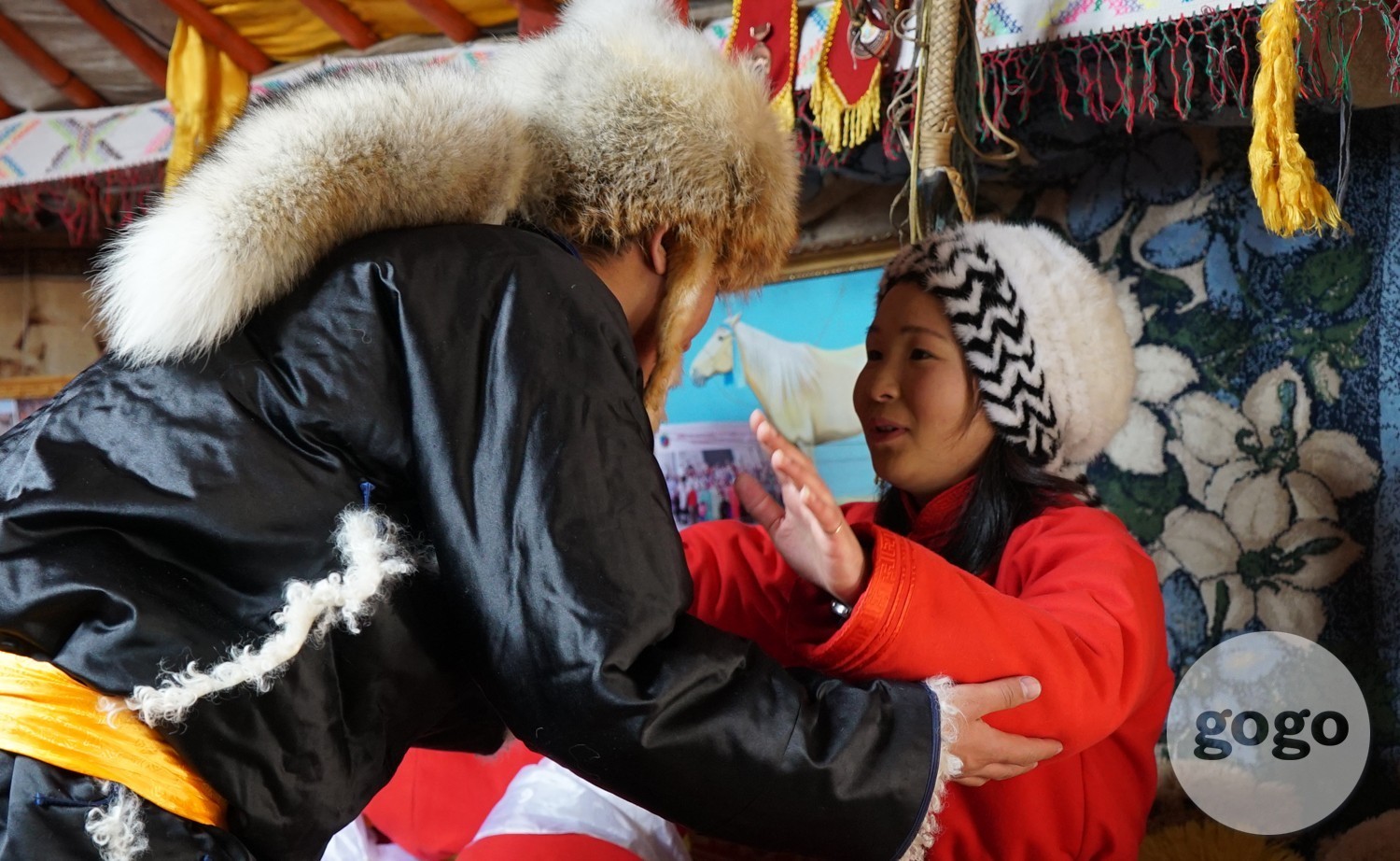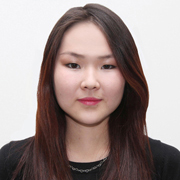“Tsagaan Sar” celebration is the Lunar New Year for the Mongols according to their centuries-old lunar astrology. This year Mongolians celebrate Tsagaan sar (Lunar Year) between 15-18 February. Date changes every year.
The Mongols celebrate Tsagaan Sar since the Great Mongol Empire for passing the harsh winter in good health and is considered as the beginning of spring.
Moreover, the Tsagaan Sar is a big family celebration as everyone gather at their elders, grandparents or parents home to greet and wish well for the coming year.
The date of the celebration is determined according to the lunar calendar. This year the first day of Tsagaan Sar occurs on Feb 27th and the first 3 days of Tsagaan Sar (Feb 27-Mar 1) is non-working public holiday nationwide.
In the city, the first 3 days of Tsagaan Sar is a holiday, though it extends as long as 15 days for nomads in the countryside, and after Day 15 the new year is no longer new, and everyone stops visits and festivities and goes back to the normal, ever busy lifestyle.
Families, especially women prepare for Tsagaan Sar celebration at least one month prior by cleaning houses, yards, gers to meet the New Year fresh as well as making hundreds to thousands of buuz, a type of Mongolian steamed dumpling filled with meat.
Although urbanization is taking place rapidly, Mongolians still manage to keep their traditions and customs within the city boundaries.
BIG FEAST TABLE

Mongolians have a tradition to greet the new year with big feast table symbolizing prosperity and success in the coming year. The table should be ready on Tsagaan Sar Eve (Bituun). In the evening of Bituun, families gather together and one needs "to eat to repletion" or to have enough food which symbolizes plenty of food and full belly in the coming New Year. It is believed that staying hungry on this day will prophet hunger for the whole state so that everyone makes sure that one has eaten. It is the only festival that you can taste or try almost all of traditional cuisines at every family you visit.
Main foods on the Tsagaan sar table are uuts (lamb loin), cookie set plate and buuz while main drinks are milk tea, airag (mare`s milk), seabuckthorn juice and alcohol beverages. Also, the feast table is usually accompanied with the appetizers, salad plates, candies and dairy products.

Every family first offer milk tea and dairy products to their visitor and then buuz. Also, all guests must taste the uuts (lamb loin) and cookie set plate. In other words, the more you visit, the more you will eat.
If the total animal fat we should consume comprises 30% of our total supplement intake, while our one day of Tsagaan Sar food intake provides 60% of animal fat.
You might wonder that what to do with the foods on the table after the Tsagaan Sar. Elders share the lamb loin and cookie set plate with their children and relatives.
GREETINGS

In the first morning of Tsagaan Sar people get up before sunrise, put on their new or clean deel, the traditional costume of Mongolia and walk in directions prescribed by the zodiac to start of the new year in right direction. This is thought to bring good luck for the coming year. Then men climb to the nearest mountain to watch the first sunrise of the New Year. Women make milk tea and offer it to earth and god for the best wishes. With the sunrise, the greeting ceremony starts in order of age: the eldest or hosts of the family sit at khoimor (opposite side of the door, the most sacred areas of the home).
People greet each other in a unique way. The younger people vow to the elderly and cross their hands under the hands of the older people supporting their elbow and say: AMAR BAINA UU meaning how are you. Then the older family member kisses the other on the both cheeks. Sometimes they greet with an offer of "Hadag", a blue scarf as token of respect. Also, it is common to greet the elders with money.
-100356-2087551076.jpeg)
Thereafter, the guests have a seat and exchange snuff-bottles in greeting and say: have you got through the winter in plenty and seeing at spring well. With these traditional New Year greetings, they encourage each other. A younger person starts the greeting with snuff-bottle by loosening the cap of the bottle by turning it to right three times and snuffing it first and offer it to elder person with the right hand. In return, elder person gets own snuff-bottle loosens the cap as well and exchange.
Then the family you visit give presents to you, thanking for your visit.
You must remember to avoid greeting elders and relatives or going to other households on the seventh day of New Year, as this year is considered as black day.
THINGS TO AVOID
- To get water from springs or rivers. Water buckets should be filled beforehand.
- To sew old clothes. Only sewing of new garments is welcomed and seen as good wishing for New Year.
- To borrow and lend.
- To cry and quarrel. It is believed that whole year will be bad with disputes.
- To throw away ash from the stove. Cleaning should be done on Bituun.
- To say bad words, to hunt, to kill an animal.
- To greet elders and relatives, to go to other households on the seventh day of New Year, as this year is considered as black day.
- To greet one’s husband or wife. Doing so might end in split and become enemies.
- To overdrink and be disrespectful at the feast table.
- To carry knife. This means that someone came with bad intentions.
Technically that is how we celebrate Tsagaan Sar in Mongolia. It is definitely the festival not to be missed if one wants to really get to know Mongolian culture.
Tsagaan Sar is not only a festival, it is a cultural heritage of Mongolians, more than just greeting, meeting and eating together. Tsagaan Sar gives an opportunity to gather all the family members to strengthen their ties and relationship, which is not observed in many other countries.
“Tsagaan Sar” celebration is the Lunar New Year for the Mongols according to their centuries-old lunar astrology. This year Mongolians celebrate Tsagaan sar (Lunar Year) between 15-18 February. Date changes every year.
The Mongols celebrate Tsagaan Sar since the Great Mongol Empire for passing the harsh winter in good health and is considered as the beginning of spring.
Moreover, the Tsagaan Sar is a big family celebration as everyone gather at their elders, grandparents or parents home to greet and wish well for the coming year.
The date of the celebration is determined according to the lunar calendar. This year the first day of Tsagaan Sar occurs on Feb 27th and the first 3 days of Tsagaan Sar (Feb 27-Mar 1) is non-working public holiday nationwide.
In the city, the first 3 days of Tsagaan Sar is a holiday, though it extends as long as 15 days for nomads in the countryside, and after Day 15 the new year is no longer new, and everyone stops visits and festivities and goes back to the normal, ever busy lifestyle.
Families, especially women prepare for Tsagaan Sar celebration at least one month prior by cleaning houses, yards, gers to meet the New Year fresh as well as making hundreds to thousands of buuz, a type of Mongolian steamed dumpling filled with meat.
Although urbanization is taking place rapidly, Mongolians still manage to keep their traditions and customs within the city boundaries.
BIG FEAST TABLE

Mongolians have a tradition to greet the new year with big feast table symbolizing prosperity and success in the coming year. The table should be ready on Tsagaan Sar Eve (Bituun). In the evening of Bituun, families gather together and one needs "to eat to repletion" or to have enough food which symbolizes plenty of food and full belly in the coming New Year. It is believed that staying hungry on this day will prophet hunger for the whole state so that everyone makes sure that one has eaten. It is the only festival that you can taste or try almost all of traditional cuisines at every family you visit.
Main foods on the Tsagaan sar table are uuts (lamb loin), cookie set plate and buuz while main drinks are milk tea, airag (mare`s milk), seabuckthorn juice and alcohol beverages. Also, the feast table is usually accompanied with the appetizers, salad plates, candies and dairy products.

Every family first offer milk tea and dairy products to their visitor and then buuz. Also, all guests must taste the uuts (lamb loin) and cookie set plate. In other words, the more you visit, the more you will eat.
If the total animal fat we should consume comprises 30% of our total supplement intake, while our one day of Tsagaan Sar food intake provides 60% of animal fat.
You might wonder that what to do with the foods on the table after the Tsagaan Sar. Elders share the lamb loin and cookie set plate with their children and relatives.
GREETINGS

In the first morning of Tsagaan Sar people get up before sunrise, put on their new or clean deel, the traditional costume of Mongolia and walk in directions prescribed by the zodiac to start of the new year in right direction. This is thought to bring good luck for the coming year. Then men climb to the nearest mountain to watch the first sunrise of the New Year. Women make milk tea and offer it to earth and god for the best wishes. With the sunrise, the greeting ceremony starts in order of age: the eldest or hosts of the family sit at khoimor (opposite side of the door, the most sacred areas of the home).
People greet each other in a unique way. The younger people vow to the elderly and cross their hands under the hands of the older people supporting their elbow and say: AMAR BAINA UU meaning how are you. Then the older family member kisses the other on the both cheeks. Sometimes they greet with an offer of "Hadag", a blue scarf as token of respect. Also, it is common to greet the elders with money.
-100356-2087551076.jpeg)
Thereafter, the guests have a seat and exchange snuff-bottles in greeting and say: have you got through the winter in plenty and seeing at spring well. With these traditional New Year greetings, they encourage each other. A younger person starts the greeting with snuff-bottle by loosening the cap of the bottle by turning it to right three times and snuffing it first and offer it to elder person with the right hand. In return, elder person gets own snuff-bottle loosens the cap as well and exchange.
Then the family you visit give presents to you, thanking for your visit.
You must remember to avoid greeting elders and relatives or going to other households on the seventh day of New Year, as this year is considered as black day.
THINGS TO AVOID
- To get water from springs or rivers. Water buckets should be filled beforehand.
- To sew old clothes. Only sewing of new garments is welcomed and seen as good wishing for New Year.
- To borrow and lend.
- To cry and quarrel. It is believed that whole year will be bad with disputes.
- To throw away ash from the stove. Cleaning should be done on Bituun.
- To say bad words, to hunt, to kill an animal.
- To greet elders and relatives, to go to other households on the seventh day of New Year, as this year is considered as black day.
- To greet one’s husband or wife. Doing so might end in split and become enemies.
- To overdrink and be disrespectful at the feast table.
- To carry knife. This means that someone came with bad intentions.
Technically that is how we celebrate Tsagaan Sar in Mongolia. It is definitely the festival not to be missed if one wants to really get to know Mongolian culture.
Tsagaan Sar is not only a festival, it is a cultural heritage of Mongolians, more than just greeting, meeting and eating together. Tsagaan Sar gives an opportunity to gather all the family members to strengthen their ties and relationship, which is not observed in many other countries.


